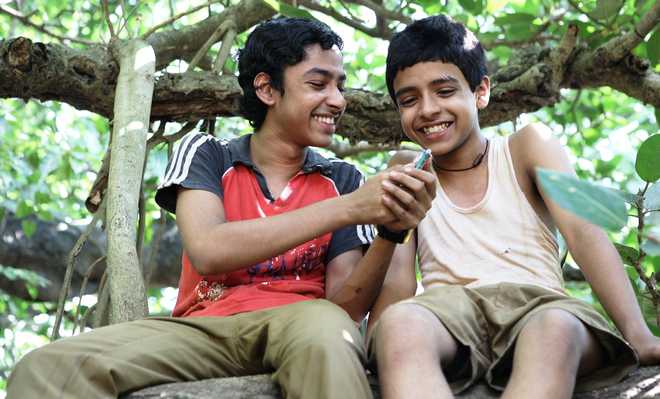Caste in different frames
Shoma A. Chatterji
Chauranga is the directorial debut of journalist-writer-turned director Bikas Ranjan Mishra. The film won the Grand Jury Prize for Best Film at 13th Indian Film Festival Of Los Angeles 2015 (IFFLA), the Golden Gateway of India for Best Film (India Gold) at 16th Mumbai Film Festival 2014, the “Incredible India” Award for the best project of co-production market, at the NFDC Film Bazaar, IFFI in Goa, 2011, and Script Funding from Goteborg International Film Festival, Sweden. Its Indian release was put off because of the long tours of its screening at different festivals in India and beyond. Chauranga is based on a real-life incident but the incident is just a trigger for the film’s story. It depicts the human tragedy provoked, planned and executed in the name of caste by the upper castes on the Dalits.
“A boy from a lower caste was brutally murdered for writing a love letter to an upper caste girl in 2008 in the Kaimur district of Bihar. I took this as a point of motivation and worked out my own script,” says Mishra. The script was later selected by the Berlinale Talent Campus’ Script Station programme. Marten Rabarts, artistic director of Amsterdam-based Binger FilmLab, consulted Bikas on the script at both the labs.
Fourteen-year-old Santu wants to go to school like his elder brother Bajrangi. Their mother Dhaniya works as a maid at the mansion of the upper-caste village headman Dhaval, who exploits her sexually, though she is an untouchable. Bajrangi comes home from the city on a sudden vacation. Santu begs to be sent to school but his mother cannot afford the cost. Santu has a crush on the village headman’s daughter Mona, who has no clue about Santu’s crush. Santu persuades Bajrangi to pen a love letter to Mona. Bajrangi writes the letter and Santu hands it to Mona. What happens when the love letter written in Bajrangi’s hand reaches Dhaval build up to an electrifying climax. Santu runs away through a twist of fate but the price he has to pay for his escape is a tragic one. It is the running away that signifies hope at the end of this dark tunnel called Chauranga.
“I grew up in a village in Bihar, which later became Jharkhand and always felt these forces of caste politics and torture which could have led to similar tragedies. But there was no such tragedy in my village. I imagined the incident as having taken place in my village and became an active participant in the narrative,” Mishra elaborates.
The film has been crowd-funded by Sanjay Suri, Onir and Mohan T Mulani, including several co-producing banners, along with the NFDC. Crowd-funding means when people come together to fund a film or a music video or any creative project for tangible and intangible rewards but no financial gain. Almost the entire acting cast and a major slice of the technical crew is made up of artistes and technicians from West Bengal. The cast comprises Sanjay Suri, who plays Dhaval, the zamindar, Arpita Chatterjee, who plays his wife, Swatilekha Chatterjee, who plays his mother, Tannishtha Chatterjee, who plays the Dalit woman and the two very young actors Soham Matira, who plays Santu and Riddhi Sen, who plays Bajrangi.
“The fictitious city of Chauranga (by its absence from screen) is also the city of escape. City is the place where schools are and where people watch Salman Khan’s movies. I nowhere suggest that city is a better place where life is really good. I don’t believe that our cities are much different from our villages, actually they aren’t. Our country is a big village. Cities are just different superficially because people live in high-rises and drive high-speed cars. Identity, be it religion, language or caste, still dominates our politics and public discourse,” sums up Mishra.










